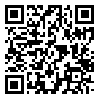Volume 2, Issue 1 (4-2014)
jmsthums 2014, 2(1): 54-60 |
Back to browse issues page
Download citation:
BibTeX | RIS | EndNote | Medlars | ProCite | Reference Manager | RefWorks
Send citation to:



BibTeX | RIS | EndNote | Medlars | ProCite | Reference Manager | RefWorks
Send citation to:
jadgal K M, zareban I, alizadeh siouki H, sepehrvand N. The Epidemiological features of Malaria in Konarak, Iran (2007 - 2011). jmsthums 2014; 2 (1) :54-60
URL: http://jms.thums.ac.ir/article-1-170-en.html
URL: http://jms.thums.ac.ir/article-1-170-en.html
Abstract: (11905 Views)
Background: Malaria is one of the most serious diseases which threats people’s health in different parts of world. It’s one of the main infectious diseases in developing world, which accompanies with enormous socio-economic burden. This study is aimed to investigate the epidemiologic features of Malaria cases in Konarak since 2007 until 2011.
Materials And Methods: This descriptive Survey investigates malaria-related factors during a 5 years period of time based on information extracted from the monthly and quarterly Malaria reports to Core of Malaria at Konarak’s Health Center by peripheral health centers and health houses.
Results: Totally among 1250 malaria cases, 69% were incoming passengers. The total number of malaria cases has been decreased in 2011 compared to the 2007. Falciparum cases have been decreased significantly from 31 case in 2007 to 4 case in 2011. 53% of cases was diagnosed by the health staff which indicates the effectiveness of Malaria screening and surveillance program. This significant decline can be attributed to the improvement in the diagnosis and treatment of malaria, distribution of R.D.T kits and insecticide-treated mosquito nets and development malaria laboratories.
Conclusion: It seems that with political support and the effective work of health care workers and staffs in health system, malaria can be eliminated in the near future. Of course the negative impact of malaria epidemics in our neighboring country, Pakistan and the role of illegal immigrants should not be overlooked. To handle this problem undoubtedly we require to strengthen the intersectoral cooperations as well as improving educational activities.
Type of Study: Research |
Subject:
Special
Received: 2015/03/8 | Accepted: 2015/03/8 | Published: 2015/03/8
Received: 2015/03/8 | Accepted: 2015/03/8 | Published: 2015/03/8
Send email to the article author
| Rights and permissions | |
 | This work is licensed under a Creative Commons Attribution-NonCommercial 4.0 International License. |





